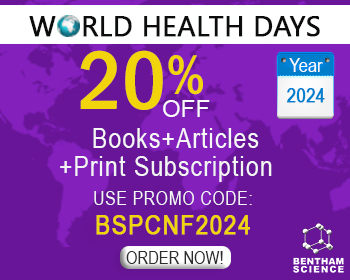Abstract
Background: Açaí (Euterpe oleracea), a “superfruit” consumed worldwide, is a Brazilian Amazon native fruit, with high nutritive value due to its high content of lipids, proteins, and fibers, besides bioactive compounds, such as anthocyanins, carotenoids and phenolic compounds in its composition associated with biological action beneficial to health. The increased consumption of this fruit has stimulated breeding programs in the search of plants and fruits with higher productivity and bioactive compounds, generating information for the development of new cultivars with improved attributes. This work aimed to study six different genotypes of açaí, developed by the breeding program, evaluating their physicochemical characteristics and proximate composition, bioactive compounds and antioxidant activity.
Methods: The genotypes were analyzed for titratable acidity, pH, total soluble solids and proximate composition, such as moisture, protein, lipids, total fiber, carbohydrates and ashes contents. A spectrophotometric method using Folin-Ciocalteau reagent performed the phenolic compounds analysis and HPLC evaluated carotenoids and anthocyanins extracted exhaustively. The ABTS assay evaluated the antioxidant activity.
Results: The L06P13 and L09P09 genotype presented higher content of total fiber, carbohydrates, and ashes when compared to the commercial sample used as a standard. Furthermore, L22P13 genotype showed the highest content of total anthocyanins (6745.81 mg/100g), total carotenoids (118 μg/g) and antioxidant activity (674.83 μM Trolox/g) when compared to commercial sample.
Conclusion: The results revealed promising açaí genotypes and support the importance of advances in the area of functional foods and breeding programs.
Keywords: Açaí, Euterpe oleracea, breeding, anthocyanins, carotenoids, antioxidant activity.
[http://dx.doi.org/10.1111/j.1753-4887.1997.tb06100.x] [PMID: 9155225]
[http://dx.doi.org/10.1016/j.cca.2014.06.004] [PMID: 24933428]
[http://dx.doi.org/10.1046/j.1365-2621.2001.00513.x]
[http://dx.doi.org/10.1016/j.phytol.2010.11.005]
[http://dx.doi.org/10.1016/j.taap.2014.06.028] [PMID: 25062774]
[http://dx.doi.org/10.1016/j.toxlet.2015.09.020] [PMID: 26422990]
[http://dx.doi.org/10.1212/WNL.0b013e31824f7fc4] [PMID: 22491871]
[http://dx.doi.org/10.1002/mnfr.201100311] [PMID: 22102431]
[http://dx.doi.org/10.1016/j.toxlet.2003.10.031] [PMID: 15068825]
[http://dx.doi.org/10.2174/157340711798375877]
[http://dx.doi.org/10.1002/biof.5520340107] [PMID: 19706973]
[http://dx.doi.org/10.1016/j.foodchem.2015.05.031] [PMID: 26041234]
[http://dx.doi.org/10.1016/j.foodchem.2015.04.088] [PMID: 26041173]
[http://dx.doi.org/10.17660/ActaHortic.2009.841.57]
[http://dx.doi.org/10.4260/BJFT2010130400032]
[http://dx.doi.org/10.1016/j.foodres.2010.09.011]
[http://dx.doi.org/10.1002/jsfa.2740100110]
[http://dx.doi.org/10.2174/1573407212666160512120242]
[http://dx.doi.org/10.2174/1573407212666151214221952]
[http://dx.doi.org/10.1016/j.foodchem.2007.01.010]
[http://dx.doi.org/10.1590/S0101-20612005000400016]
[http://dx.doi.org/10.1007/978-3-319-44127-6_11]
[http://dx.doi.org/10.1590/0100-2945-148/14]
[http://dx.doi.org/10.1021/jf060976g] [PMID: 17061839]
[http://dx.doi.org/10.1590/S0101-20612012005000001]
[http://dx.doi.org/10.1016/j.jfca.2011.03.015]
[http://dx.doi.org/10.1016/j.foodchem.2014.12.041] [PMID: 25624229]
[http://dx.doi.org/10.1016/j.foodchem.2014.12.102] [PMID: 25660857]
[http://dx.doi.org/10.1016/j.jchromb.2012.09.015] [PMID: 23026226]
[http://dx.doi.org/10.1021/jf060300l] [PMID: 16719536]
[http://dx.doi.org/10.1021/jf8007037] [PMID: 18693743]
[http://dx.doi.org/10.1016/j.atherosclerosis.2011.02.035] [PMID: 21411096]
[http://dx.doi.org/10.1016/j.mrgentox.2009.10.009] [PMID: 19892033]
[http://dx.doi.org/10.1016/j.foodchem.2012.01.048]
[http://dx.doi.org/10.1074/jbc.275.16.11915] [PMID: 10766819]
[PMID: 11440960]
[http://dx.doi.org/10.1017/S000711451500416X] [PMID: 26482064]
[http://dx.doi.org/10.1146/annurev.nutr.23.011702.073307] [PMID: 12626691]
[http://dx.doi.org/10.1001/archopht.125.9.1225] [PMID: 17846363]
[http://dx.doi.org/10.1007/s00417-013-2492-3] [PMID: 24150707]
[http://dx.doi.org/10.1007/s002170050042]
[http://dx.doi.org/10.1016/j.foodchem.2014.04.114] [PMID: 24996309]
[http://dx.doi.org/10.1021/jf0502698] [PMID: 15884874]
[http://dx.doi.org/10.2174/1573407213666161118120014]
[http://dx.doi.org/10.2174/1573407212666161014130546]
[http://dx.doi.org/10.1016/j.jff.2013.12.025]
[http://dx.doi.org/10.2174/157340720904140404151439] [PMID: 24761137]
[http://dx.doi.org/10.1111/j.1750-3841.2009.01352.x] [PMID: 20492125]


























